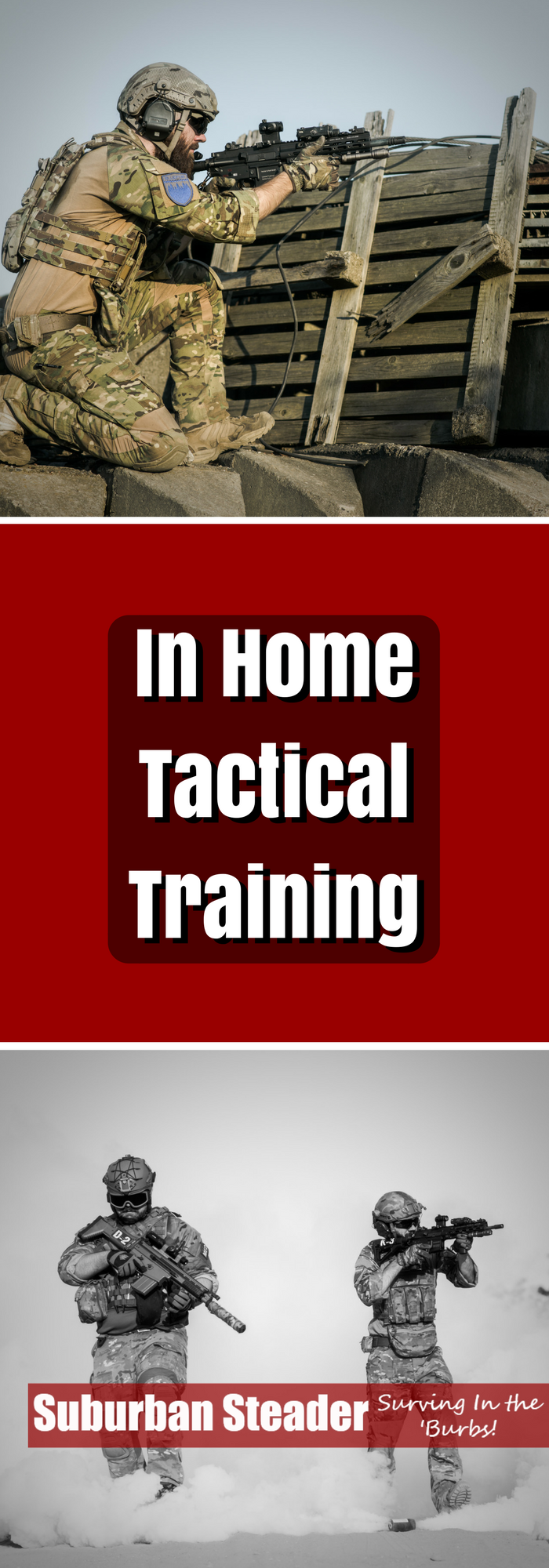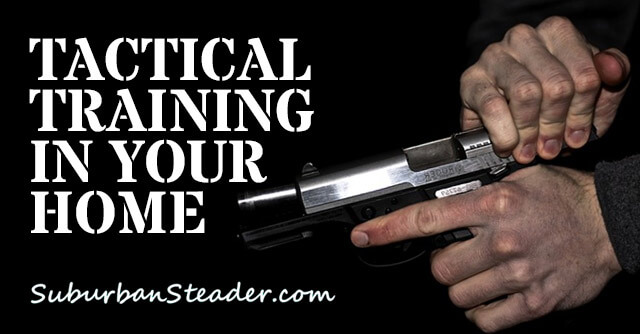Guest Post: Tactical Training In Your Home
Being an avid shooter is great survival training and an important tool for the suburban homesteader. There are many survival scenarios where you are likely to have to be able to defend yourself and your family; so learning to shoot, and shoot well, is an important part of survival. But there’s only so much you can do at a shooting range. You need to work on the tactics that go with shooting as well, or you’re not going to get a chance to use your gun.
Many ranges offer tactical shooting events. These are excellent for tactical training as well, as in them you have to compete against various targets, shooting all of them quickly and in a tactically logical order. You also have to use skills like shooting while moving, shooting a moving target and shooting in a low light situation. Those makes these events an absolutely essential part of your self-defense training.
Nevertheless, there are limits as to what you can do in the shooting range, either in regular target practice or in tactical shooting events. Those things are best practiced in your home.
Tactical Training: A Word About Safety
If you are going to do any tactical training with firearms in your home, you must use extreme precaution. Check to see that your gun is unloaded, and then check again. An accidental discharge could have fatal consequences, so you want to make sure that you eliminate that possibility.
Even though your gun is unloaded, you never want to point it at a real person. Pointing a gun at a person you aren’t planning to kill is bad training, even if it is a practice drill. It will affect how you think of firearms and how you think when things turn real. You’re better off using something that is clearly not a real gun, when it comes to practice where you are pointing the gun at people.
Dry Fire Practice Exercises
Dry fire refers to firing a gun without any ammunition in it. Most firearms can handle these situations just fine, but I would avoid doing it with firearms that use rimfire ammunition. If you are not sure whether your gun can be safely dry fired or not, check with your local gun store or range. They should be able to tell you.
Dry firing offers the opportunity to practice a number of important shooting skills that you may not have the time or money to practice at the range. There are also a number of skills that are associated with shooting, especially in a home-defense situation which you can improve upon during your dry fire practice.
Dry Firing
Basic dry firing consists of cocking the gun, pointing at a target and pulling the trigger. This is a great way to practice the fundamentals of shooting, making them automatic. It is also a great way to practice things like target acquisition. The faster you can find a target, the faster you can send lead down range. If you can do that faster than the bad guys, while still remaining accurate, you stand a much better chance of survival.
Draw and Fire
Most ranges won’t allow you to draw and fire, due to the risk of you pulling the trigger early and either hitting yourself in the foot or sending a round ricocheting off the floor. However, the important part of drawing and firing can be practiced just as well dry-firing as it can with rounds in the gun.
The thing you are after is to see how quickly you can pull the gun out of the holster and align the sights with your target. Pulling the trigger any quicker than that is a sure recipe for a missed shot. Practice drawing and aligning the sights. Ideally, you should be able to get to the point where you can draw the pistol and align the sights with your eyes closed. Then, when you open your eyes, you see that the sights are actually aligned.
Reloading
Swapping magazines is an important part of defending your home. Many people will wait for that pause in firing, taking it as an opportunity to attack. The assumption is that it will take you several seconds to change magazines and another several seconds to reacquire your sights to take another shot.
You should get to the point where you can drop the expended magazine (let it fall on the floor), grab another magazine, slam it home and release the slide, all without looking. Oh, and keep the sights aligned while you’re doing it. That shouldn’t take you more than about a second and a half. If you can get to that point, then you’ll have a big surprise waiting for anyone who waits for that pause to attack you.
Firing One-Handed
You never know when you are going to end up having to fire one-handed. Perhaps you are in a spot where you can’t use both hands without exposing yourself unnecessarily. Or you could be injured in your support arm and have to fire one-handed. Even more likely is that you have a hostage or innocent in the other hand whom you are trying to drag from trouble. Practice holding your gun steadily and firing it, even though it’s with one hand.
Firing with Your Off-Hand
Speaking of injuries, few people bother to practice shooting with their off-hand. That leaves them vulnerable if they get hit in their shooting hand or arm. Get comfortable shooting with your off-hand, just in case you need it.

